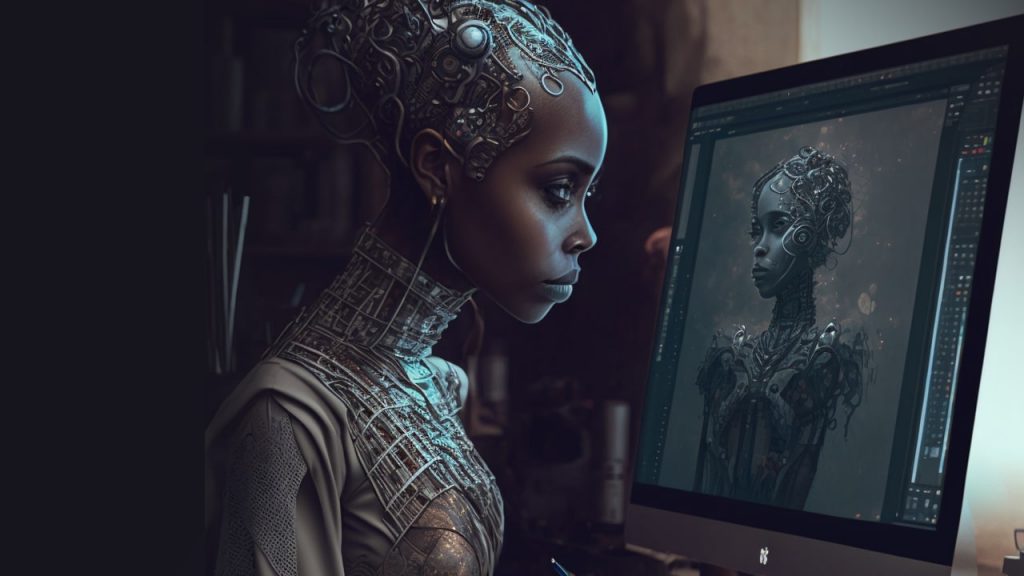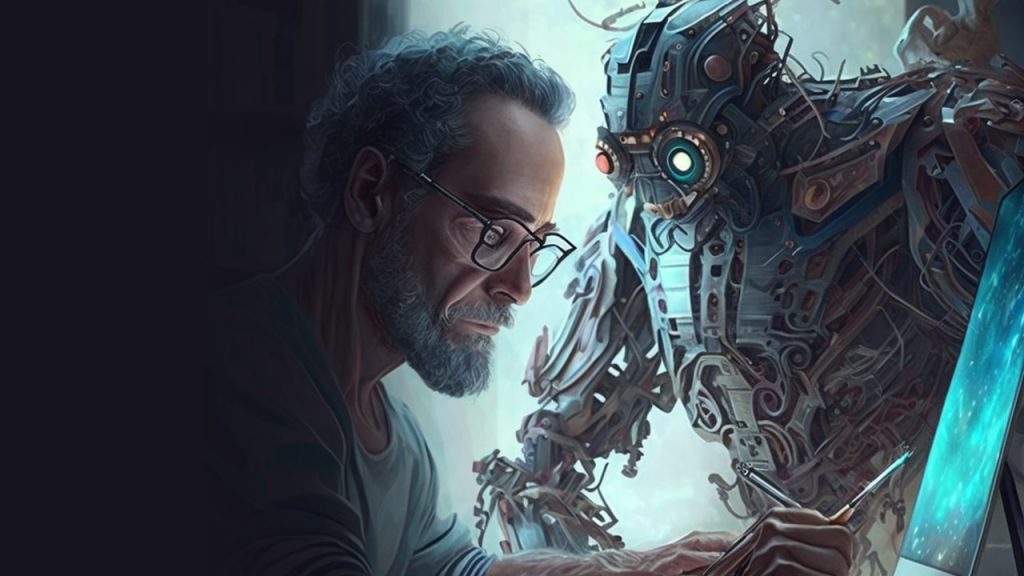The Impact of AI on the Creative Process
Artificial intelligence (AI) has been making waves across various industries in recent years, with its ability to automate tasks and improve efficiency. However, the impact of AI on creative fields such as design, music, and art is often overlooked.
In this blog post, we will explore the benefits and challenges of using AI in creativity, examine case studies of the successful integration of AI into creative processes, and speculate on future implications for human creativity.

The Benefits of AI in Creativity
One major benefit of using AI in creativity is increased productivity and efficiency. For example, graphic designers can use AI-powered tools to automate repetitive tasks such as resizing images or selecting color schemes. This frees up their time to focus on more complex design work that requires human creativity and intuition.
Another advantage of using AI in creativity is the ability to generate new ideas and insights. Machine learning algorithms can analyze large datasets to uncover patterns and trends that humans may not have noticed otherwise. In music production, for instance, Amper Music uses AI to generate custom music tracks based on user preferences.
Collaboration between humans and machines is also enhanced through the use of AI. For example, Adobe Sensei allows designers to collaborate with an intelligent assistant that can suggest design changes based on data analysis. This allows designers to work more efficiently by automating mundane tasks while still maintaining control over the creative process.
Finally, using AI in creativity can improve accuracy and precision in tasks such as editing and design. For instance, Grammarly uses machine learning algorithms to identify grammatical errors in written text. Similarly, Autodesk Dreamcatcher uses generative design algorithms to optimize designs for manufacturing constraints.
The Challenges of AI in Creativity
Despite these benefits, there are also several challenges associated with using AI in creativity. One major concern among creatives is the fear of job loss due to automation. However, many experts argue that while some routine tasks may be automated through the use of AI technology, human creativity cannot be replaced by machines.
Another challenge associated with using AI in creativity is concerned about authenticity and originality. For example, if a machine generates a piece of art or music without any input from a human artist or musician, it raises questions about whether it can truly be considered “creative.” Additionally, some worry that the widespread use of AI-generated content could lead to homogenization or lack of diversity within creative fields.
Ethical considerations also come into play when discussing the use of AI in art and media. For example, deep fake technology has raised concerns about its potential use for malicious purposes such as spreading disinformation or manipulating public opinion.
Case Studies
Despite these challenges, several companies have successfully integrated AI into their creative processes. Adobe Sensei is one such example; it offers a range of tools designed specifically for creatives including image recognition software that can automatically tag images based on their content.
Amper Music provides another example; it uses machine learning algorithms to create custom music tracks based on user preferences such as genre or mood. The company’s website claims that its technology enables anyone, regardless of musical experience, to create high-quality compositions quickly and easily.
Similarly, Autodesk Dreamcatcher uses generative design algorithms to optimize designs for manufacturing constraints, resulting in products that are both aesthetically pleasing and functional.
These examples demonstrate how companies have overcome challenges associated with using artificial intelligence for creative purposes by focusing on specific areas where machines excel -such as data analysis-while still allowing room for human input when it comes to artistic decisions.

Future Implications
Looking ahead we can expect further advancements in artificial intelligence technology which will continue revolutionizing creative fields as we know them today. Some predict that artificial intelligence will eventually become so advanced that it will surpass human capabilities when it comes to creating art or music.
However, others believe that human creativity cannot be replicated by machines, pointing out that machines lack true emotional depth. While only time will tell what impact artificial intelligence will ultimately have on our collective creative output, one thing seems clear: collaboration between humans and machines is here to stay.
Conclusion:
The impact of artificial intelligence on creative fields is both exciting and complex. While there are certainly challenges associated with integrating AI into creative workflows, such as concerns about job loss, authenticity, and ethics, the potential benefits are numerous.
By focusing on areas where machines excel, such as data analysis and automation, creatives can free up their time and energy to focus on more complex decisions requiring human intuition and emotional depth. It is clear that AI will continue to evolve in the years ahead, but it is important to remember that humans will remain an integral part of the creative process for years to come.
The future of creativity lies not in replacing human creativity with machines but rather in leveraging AI technology to augment human creativity in new and exciting ways. As we move forward, it will be important for creatives to embrace these changes while also remaining true to their own unique perspectives and artistic visions.
